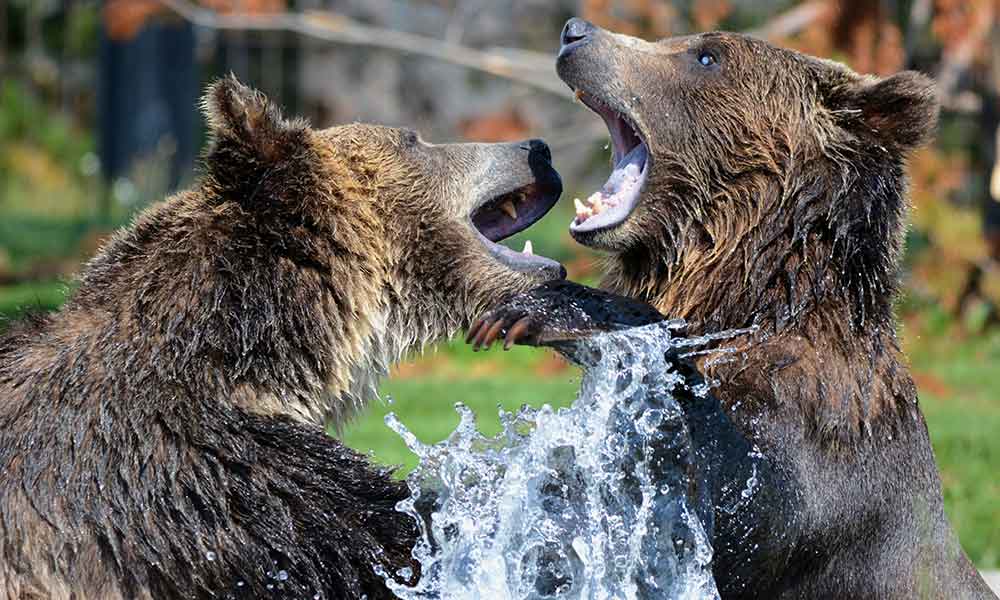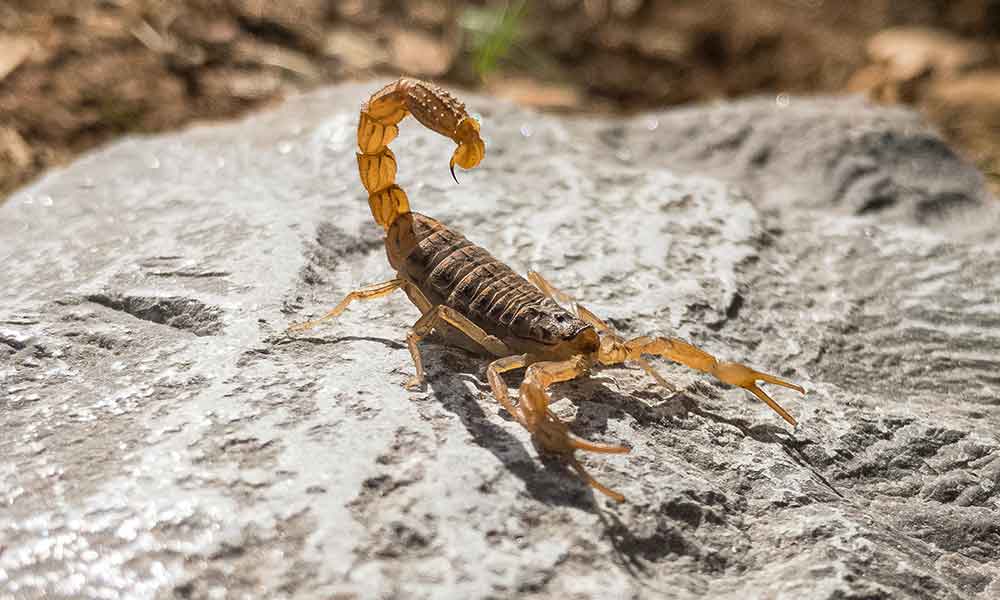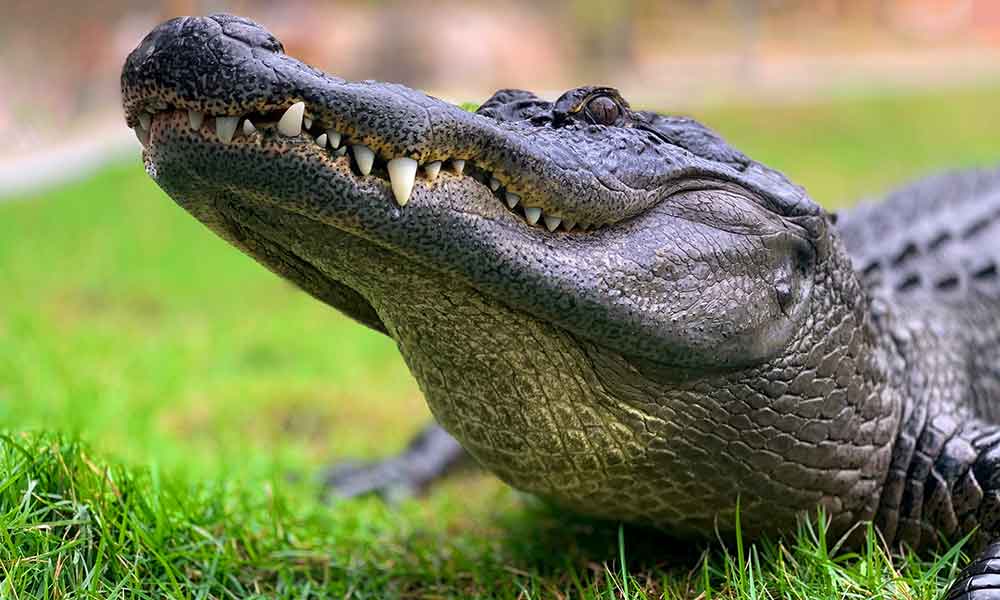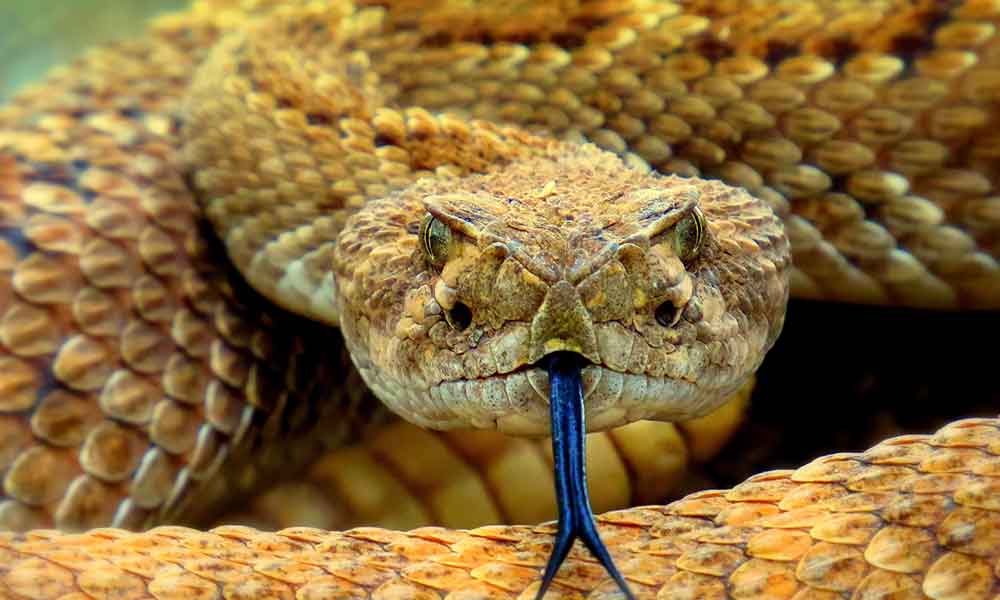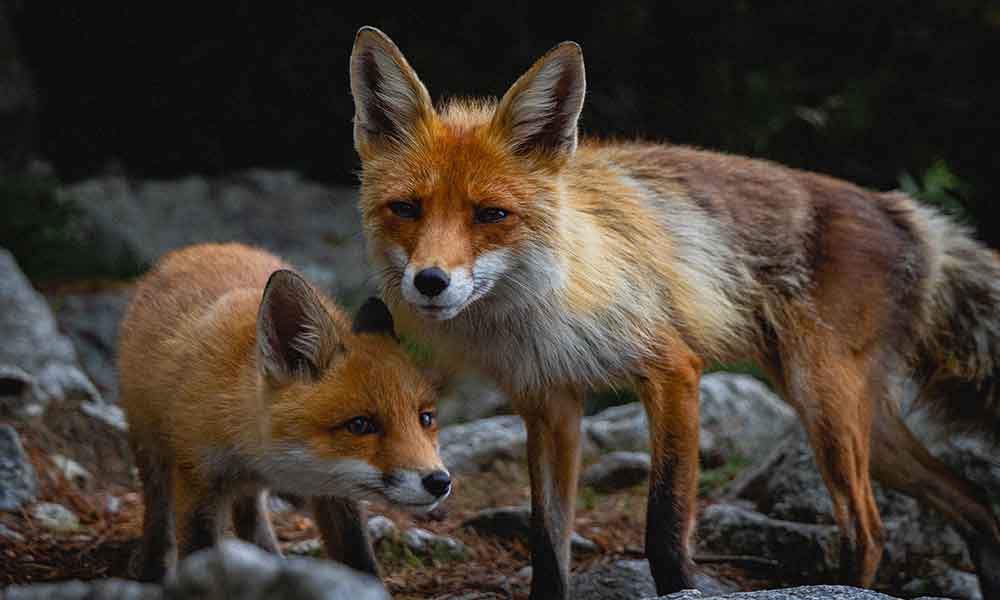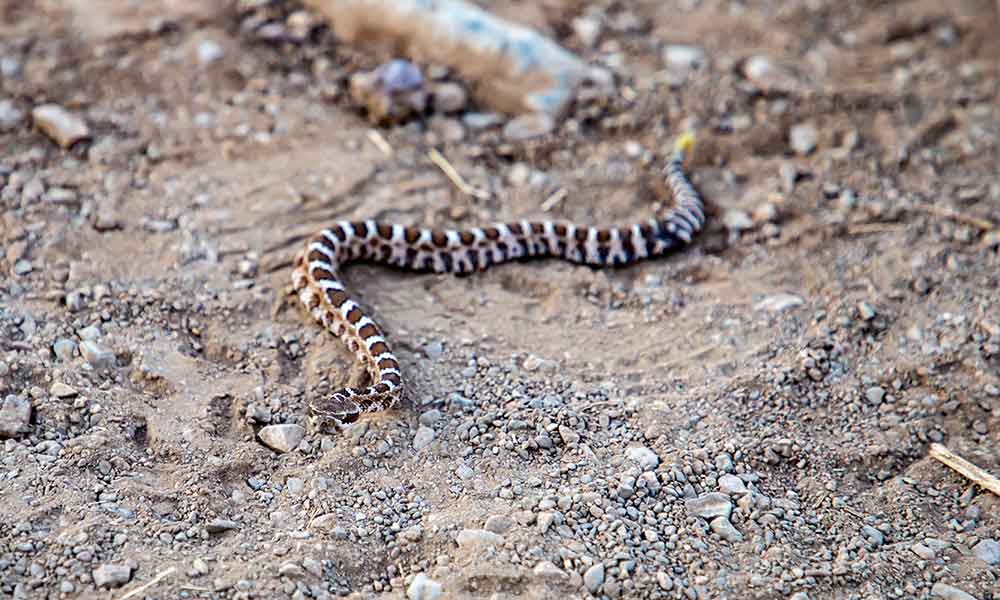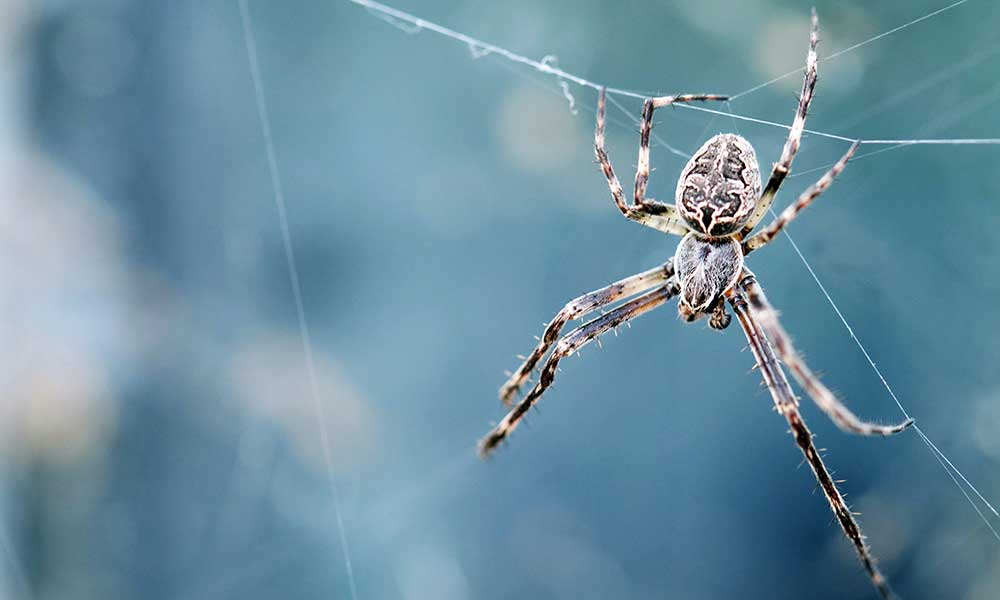There are 8 bear species around the world and 2 of them can be found throughout North America, with 1 further species located in the continent’s most remote parts.
These creatures may look like giant teddy bears, but they’re fast, ferocious, and can destroy you with a single swipe. If you want to stay safe on the trail, it’s important to know your bears!
What Species of Bear Live in North America?
The North American black bear is the most common bear species in North America. It has been estimated that over 600,000 of these creatures live on the continent, half of which are in the United States.
By contrast, there are just 55,000 brown bears, approximately 30,000 of which are in the US.
Brown bears and black bears are the main species of bears in North America, but there is also a third species living here: the polar bear.
It’s not as common, and in the US they can only be found in Alaska, but there are an estimated 4,000 to 7,000 polar bears in the USA and around 16,000 in Canada.
Brown Bears (Ursus arctos)
- Size: Up to 9 feet tall when standing on their hind legs
- Weight: Around 300 pounds for females and 600 pounds for males
- Approximate Population: 55,000 in North America
- Location: Western Canada, Alaska, Montana, Wyoming, Washington, Idaho
Brown bears have longer and straighter claws than black bears. They are also bigger, with a pronounced shoulder hump.
Although there are far fewer brown bears than black bears in North America, they are more aggressive and territorial. As a result, they are responsible for more aggressive and fatal bear attacks, claiming between 1 and 2 lives every year in the US and Canada.
Brown bears are not great at climbing trees (although they still can, especially if they are young or if there are branches to hold onto) and they are very protective of their young and their food.
What Does a Brown Bear Eat?
Brown bears are omnivorous. Their diet consists of mammals, fish, berries, and plants. Their long and straight claws help them to dig for food and catch prey.
Brown bears typically focus on small mammals that are easy to catch, but large adult males can also bring down deer and moose.
Generally, they don’t eat humans, but if you find yourself face-to-face with a grizzly in bear country, you should be very wary. These creatures are aggressive and will attack humans if they are threatened, confused, provoked, defending a carcass, or protecting their cubs.
What is the Difference Between a Brown Bear and A Grizzly Bear?
Brown bears and grizzly bears are both part of the Ursus arctos species. Both have a similar body shape, but there are distinctions regarding their location, and this impacts their diet, behavior, and size.
Brown bears that live along the coastal areas of Alaska are simply known as “brown bears”. They have access to an abundance of seafood and tend to grow bigger and stronger. Grizzly bears, on the other hand, live inland and don’t have the same marine diet. As a result, the grizzly bear tends to be smaller.
Make no mistake, though, all brown bears are huge and they’re not the sort of creatures you want to encounter while out for a leisurely stroll.
Can You Hunt a Grizzly Bear?
The grizzly bear is listed as a protected species under the endangered species act, so it is illegal to harm, harass, or kill them. There is an exception if you are attacked, of course, and you can also use bear spray on a grizzly bear if it is threatening you.
If a grizzly bear attacks and kills a human, it will often be hunted and killed in retaliation. The same is true for black bears. However, there are exceptions for bears that were threatened and provoked.
In 2016, a cyclist was killed after he turned a corner and rode straight into a bear. The bear, seemingly reacting to the perceived threat, attacked and killed the man.
As the bear did not consume any part of the man and had no history of aggressive human contact, it was not hunted and killed. Most of them are, though.
American Black Bears (Ursus americanus)
- Size: Up to 7 feet on their hind legs
- Weight: Up to 200 pounds for females and 400 pounds for males
- Approximate Population: 600,000 in North America
- Location: From northern Canada and Alaska down to central Mexico
The American black bear is the most common bear in the United States and Canada. They can be found near coastal areas, in forests, and in the alpine zone.
They are often smaller than brown bears and are also shyer, being more likely to run at the sight or sound of humans. That’s why you should make yourself big and noisy when a black bear is near.
Black bears are more agile than brown bears and this helps them to climb trees, something that they can do with incredible speed and ease.
A black bear’s claws are also short and curved, and this gives them traction as they scale the tree.
Are All Black Bears Black?
If you can rely on anything, it’s that an American black bear is a type of black bear that lives in America, right? Well, yes…and no.
It’s definitely an American bear, but it’s not always black.
There are species of American black bears that more closely resemble the color of brown bears, including the Ursus americanus Cinnamomum or “Cinnamon Bear”. This subspecies can be found in the western, central, and eastern parts of the US and Canada, including states like Colorado, Utah, Idaho, Nevada, and New Mexico. They often exist alongside their black brethren and regularly breed with them.
There are also gray and white black bears.
Black bears actually have more color variations than any other North American mammal.
Black bears were the first ones that early settlers encountered, and that’s where the name comes from. The color variations help bears to manage heat stress when living in areas with lots of open sunlight.
Polar Bears (Ursus maritimus)
- Size: Up to 10 feet tall on hind legs
- Weight: Up to 1,500 pounds
- Approximate Population: 20,000+ in North America
- Location: Northern parts of Alaska and Canada
Polar bears are the biggest, strongest, and most aggressive of all the bear species living in North America.
The good news is that you won’t encounter these animals on your hike through the woods. In the US, they can only be found in parts of Alaska, including the Cape Krusenstern National Monument and Bering Land Bridge National Preserve.
Polar bears consume more meat than other North American bears as very little vegetation grows in their natural habitat.
Polar bears have a strong sense of smell and can detect a carcass from 20 miles.
What are the 8 Types of Bears?
There are 8 main bear species, but there are also many subspecies. The main species include:
The Brown Bear (Ursus arctos)
Subspecies include:
- Atlas Bear (Ursus arctos crowtheri)
- Ussuri Brown Bear (Ursus arctos lasiotus)
- Alaskan Grizzly Bear (Ursus arctos alascensis)
- California Grizzly Bear (Ursus arctos californicus)
- Grizzly bear (Ursus arctos horribilis)
- Kodiak Bear (Ursus arctos middendorfii)
- ABC Islands Bear (Ursus arctos sitkensis)
- Stickeen Brown Bear (Ursus arctos stikeenensis)
The North American Black Bear (Ursus americanus)
Subspecies include:
- Louisiana Black Bear (Ursus americanus luteolus)
- Florida Black Bear (Ursus americanus floridanus)
- West Mexican Black Bear (Ursus americanus machetes)
- New Mexico Black Bear (Ursus americanus amblyceps)
- California Black Bear (Ursus americanus californiensis)
- Eastern Black Bear (Ursus americanus americanus)
The Sloth Bear (Melursus ursinus)
Sloth bears eat a lot of insects. They have long snouts that help them to find termites and ants. They are a vulnerable species and are also very territorial, attacking humans if they approach the bear’s habitat.
The Giant Panda Bear (Ailuropoda melanoleuca)
99% of the Giant Panda’s diet consists of plant matter, almost exclusively bamboo. They can be found in captivity around the world. In the wild, giant panda bears are restricted to central China.
The Asiatic Black Bear (Ursus thibetanus)
Subspecies include:
- Himalayan Black Bear (Ursus thibetanus laniger)
- Japanese Black Bear (Ursus thibetanus japonicus)
- Indochinese Black Bear (Ursus thibetanus mupinensis)
- Himalayan Black Bear (Ursus thibetanus laniger)
- Ussuri Black Bear (Ursus thibetanus ussuricus)
The Spectacled Bear (Tremarctos ornatus)
The only species in its family, the Spectacled Bear is a short-faced bear that is threatened with extinction. It lives in the Andes Mountains.
The Malayan Sun Bear (Helarctos malayanus)
The Malayan sun bear is the smallest bear species, weighing no more than 110 pounds. They live in Malaysia and Indonesia and feed on fruits, small mammals, honey, and birds.
The Polar Bear (Ursus maritimus)
Polar bears live in the arctic region and are the largest bears. Their habitats are threatened due to climate change, making it difficult for the bears to find food.
What is the Largest Bear in North America?
Technically, the polar bears are the largest bears in North America. However, you will only encounter these in the northern parts of Canada and Alaska.
Alaska is also home to the largest brown bears on the continent, but again, you won’t find many of these elsewhere.
In a contest between brown bears and black bears, brown bears are the biggest and the most aggressive.

